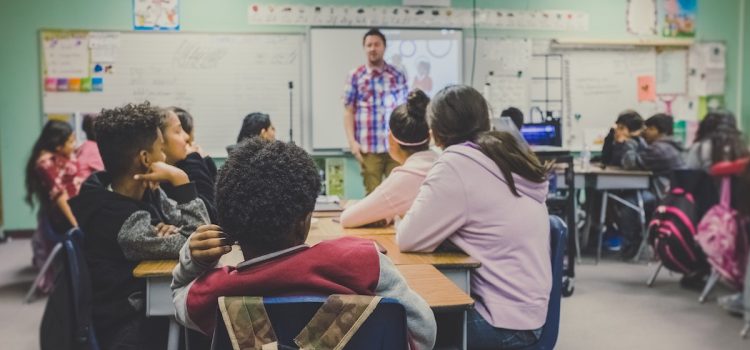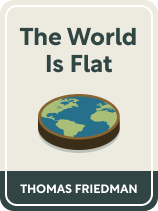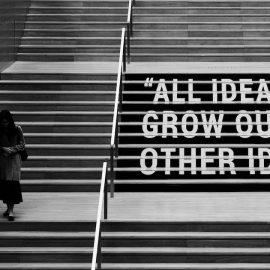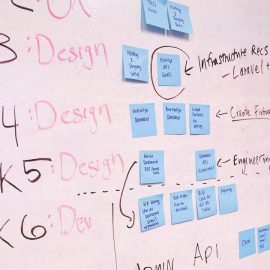

This article is an excerpt from the Shortform book guide to "The World Is Flat" by Thomas L. Friedman. Shortform has the world's best summaries and analyses of books you should be reading.
Like this article? Sign up for a free trial here.
Are schools preparing students to adapt to changing workplace demands? Are students equipped for innovation?
America has all the tools necessary to thrive in a global economy. If it wishes to do so, though, it must make some changes in the way it educates its youth. Thomas L. Friedman, in his book The World Is Flat, offers three recommendations.
Keep reading for Friedman’s advice for education reform in the U.S.
Education Reform in the U.S.
According to Friedman, one of the most important things the U.S. can do to achieve success in the flat (globalized) world is to properly educate its citizens: People need to have the right knowledge and skills to find jobs and provide value to society. A large and thriving middle class is important for economic and political stability, so the U.S. needs to educate its citizens to find good middle-class jobs.
However, many of the middle-class jobs people relied on in the past will no longer exist in the flat world. They’ll be automated, outsourced, or simply obsolete. There is no way to know exactly how these jobs will change in the future, so Friedman provides three recommendations for education reform in the U.S.:
- Teach kids how to adapt.
- Teach kids how to properly navigate technology.
- Teach kids how to make mental connections.
#1: Teach Students How to Adapt
Friedman argues that the most important thing to impart to our kids is the ability to learn and adapt: to absorb new information and figure out how to do different tasks in different ways. For instance, in a flat world, jobs and industries will constantly evolve, making it necessary for workers to adapt to changing workplace demands.
(Shortform note: In Make It Stick, the authors give advice on learning “how to learn,” which may lead to greater adaptability. Because adapting requires you to learn things quickly, learning how to learn is an important skill to grasp. They claim the learning strategies many people are taught today are ineffective. They rely too heavily on repetition and only provide a surface-level understanding. To learn a new skill or concept well, focus on two things: comprehension and retention. The best way to improve comprehension is to identify the underlying principles instead of merely memorizing the information. To improve retention, use forms of retrieval practice that commit the information to long-term memory.)
#2: Teach Students How to Navigate Technology
Another important skill Friedman recommends we teach our children is how to properly navigate the digital world. As more people gain access to the internet, knowing how to use it to your advantage becomes critical. In particular, being able to find useful knowledge in a sea of online information can set you apart from others.
(Shortform note: Understanding technology may improve your job prospects in the short term, but a major concern of the 21st century is the automation of jobs causing mass unemployment. In 21 Lessons for the 21st Century, Yuval Noah Harari points out that the rise of new technologies, particularly artificial intelligence, may result in a “useless class” of people who can no longer contribute to the labor force. AI could replace even high-skilled jobs that were previously immune to automation. For example, machines could potentially learn to diagnose illnesses and injuries in patients, replacing doctors and nurses across the world.)
#3: Teach Students How to Make Mental Connections
In a flat world, Friedman argues that making connections between different areas of knowledge and expertise will be an invaluable skill because these kinds of connections are what lead to innovation and creativity. One way to foster creativity is to focus on liberal arts curricula, which promote a well-rounded education. While math and science are also crucial in a flat world, having a basis of knowledge in things like music, art, and literature can help people apply their math and science education in creative ways.
(Shortform note: With the transition to a digital, globalized world, many education experts are recognizing the importance of creativity in modern curricula and in particular how education in the arts is vital to U.S. success. One educator, for example, stresses that art and design will transform the 21st-Century economy as much as science and technology transformed the 20th-Century economy. This is because art and design are an essential part of creativity, which in turn is essential to innovation.)

———End of Preview———
Like what you just read? Read the rest of the world's best book summary and analysis of Thomas L. Friedman's "The World Is Flat" at Shortform.
Here's what you'll find in our full The World Is Flat summary:
- How the world is becoming one globalized society
- The potential costs and benefits of a flatter world
- How you can best contribute to a globalized society






